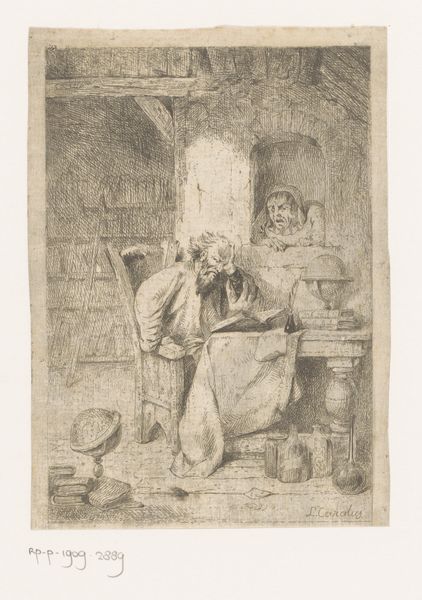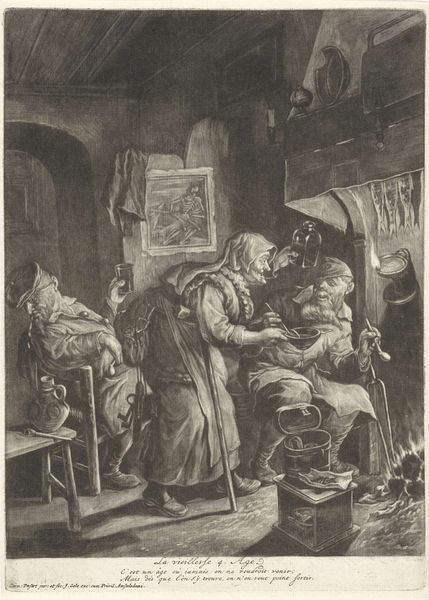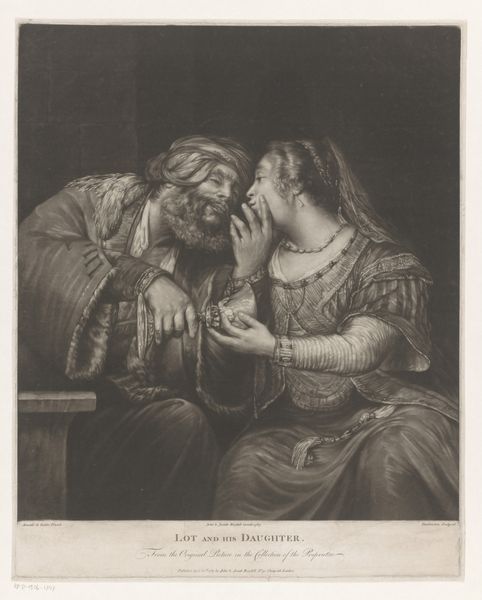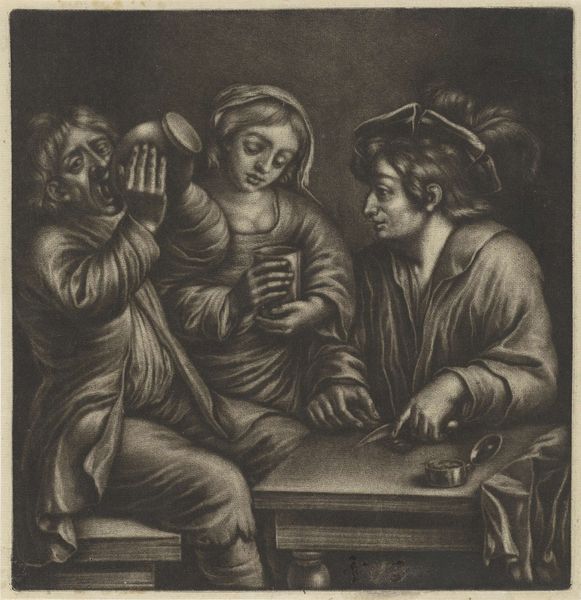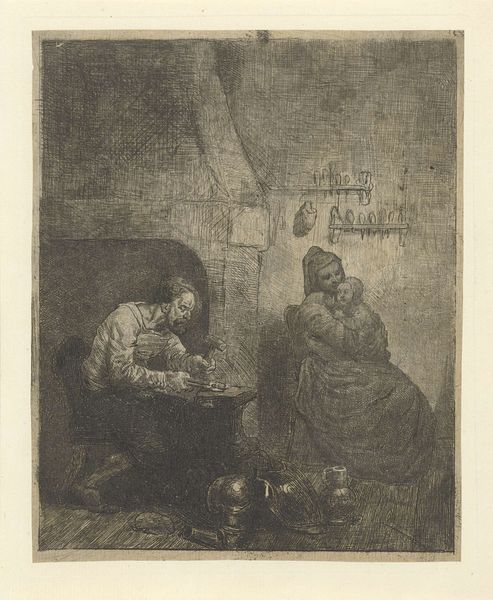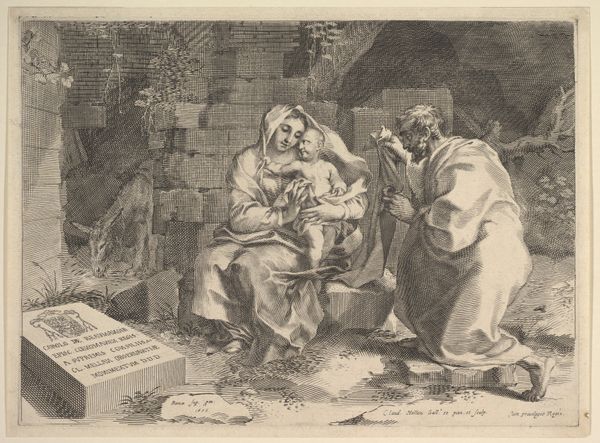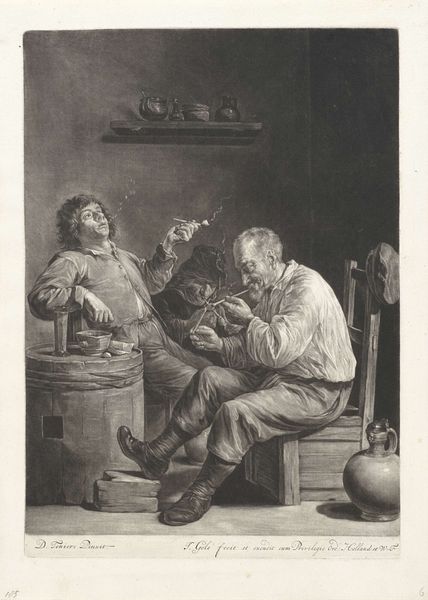
drawing, lithograph, print, etching, pen
#
drawing
#
baroque
#
dutch-golden-age
#
lithograph
# print
#
etching
#
pen
#
genre-painting
Dimensions: height 305 mm, width 228 mm
Copyright: Rijks Museum: Open Domain
This is an etching by Jan van der Bruggen, created in the Netherlands around the turn of the 18th century. It depicts a tavern scene, a genre common in Dutch art, but with a striking twist. Rather than the usual boisterous depiction of drunken revelry, we see a woman playing the flute, seemingly the focus of the room. A grotesque man stares up at her with a glass in his hand, while other figures drink in the background. What could the flute player represent in Dutch society, and why is she the center of attention rather than the object of it? To understand this image, we must look to the complex social dynamics of the Dutch Golden Age. The Dutch Republic, though prosperous, was also deeply divided by class and religious belief. Tavern scenes like these often served as a means to satirize and critique social norms. Archival research might reveal more about the artist's social circle and political leanings, helping us to decipher the deeper meaning behind this seemingly simple tavern scene.
Comments
No comments
Be the first to comment and join the conversation on the ultimate creative platform.
